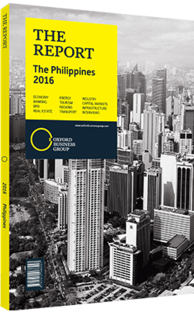Milagros Ong-How, Executive Vice-President, Universal Harvester Incorporated: Interview

Interview: Milagros Ong-How
What can be done to foster private sector participation in domestic fertiliser production, and which crops benefit from increased fertiliser use?
MILAGROS ONG-HOW: Fostering private sector commitments in the Philippines will require a long-term, multi-dimensional approach that includes legislative reforms to attract investors to the agriculture sector through tax incentives and access to credit. An “information, education and communication” approach that focuses on current and future farmers is also needed, along with free education on agricultural business management for current and future stakeholders, and efforts to incentivise the adoption of appropriate technologies that improve production efficiency and profitability. As the sector expands and exerts a greater force multiplier, there will be more farmers justifying support programmes from focused agencies. Also needed are infrastructure improvements – to roads and ports for example – to ensure growers have better access to fertilisers and points of delivery at competitive prices.
The crops benefiting from fertiliser use are the country’s four major staples: rice, corn, cassava and sweet potato. These crops make up 70% of the country’s food consumption, while the remaining 30% comes primarily from other crops and livestock. A concerted effort must be made for these crops to sustain all 100m Filipinos. Alongside this, only 60% of the land being used for agricultural activities utilises chemical fertilisers. This means there is great potential for both farmers and fertiliser producers to improve the situation. The remaining 40% either does not use fertiliser at all or relies on pure organic fertiliser. This is due to a lack of funding, limited access to fertiliser and misconceptions about the use of chemical fertiliser. While the population of the Philippines is growing, the 40% of land that is not being farmed in an efficient way is quickly being given over to residential, commercial and industrial use. As a result, all arable land will have to achieve increases in crop yields.
How can fertiliser distribution be improved to ensure countrywide accessibility and price stability?
ONG-HOW: To encourage fair competition across all fertiliser brands and geographical markets, the government must make transport services accessible and affordable to producers. The availability of at least two fertiliser brands in an any given area encourages fair competition and lowers and stabilises prices. The government should also consider developing the rail network to connect the country’s agricultural regions and enable the faster transport of agricultural goods at reasonable costs. We have improved our own fertiliser distribution through better logistics management, the use of shipping lines and the port network so that farmers can access fertilisers at stable prices.
To what extent can the Philippines work to encourage the engagement of qualified human capital and entrepreneurs in agriculture?
ONG-HOW: We have to embrace the fact that the Philippines is an agricultural country. The government and the private sector can spark progress and hope in the agricultural sector by working together. Socio-economic interventions must be refocused on agricultural initiatives and projects, particularly with regard to encouraging younger generations to look for employment opportunities in agriculture. Our education system should prioritise agricultural activities in order to direct young people towards the industry instead of persuading them to work abroad. People living in the provinces, rather than migrating to cities and leaving their lands unproductive, could stay to cultivate their lands and contribute to the food supply chain. There is without a doubt a large and broad demand in the Philippines for rice, corn, vegetables, cacao, cassava, virgin coconut oil, activated carbon from coconut shells, and a host of other products. This high demand will not only be around for a long time, it will increase – if the right steps are taken.
You have reached the limit of premium articles you can view for free.
Choose from the options below to purchase print or digital editions of our Reports. You can also purchase a website subscription giving you unlimited access to all of our Reports online for 12 months.
If you have already purchased this Report or have a website subscription, please login to continue.

